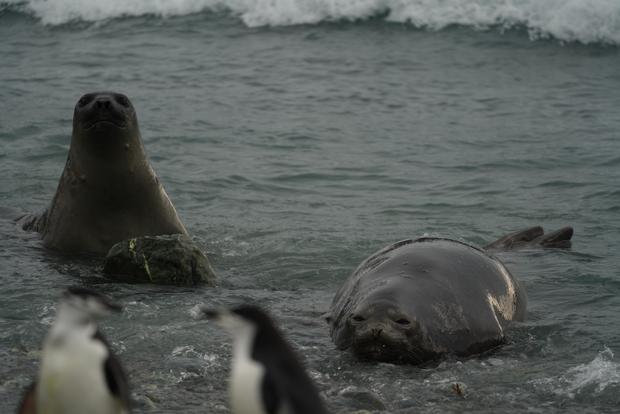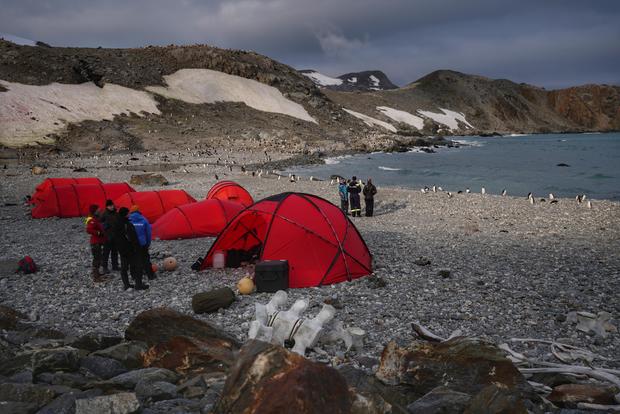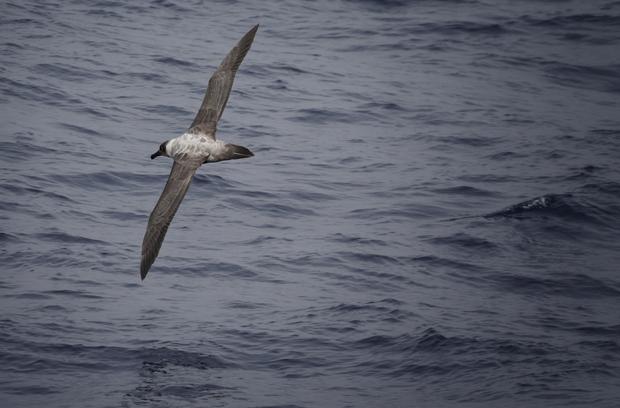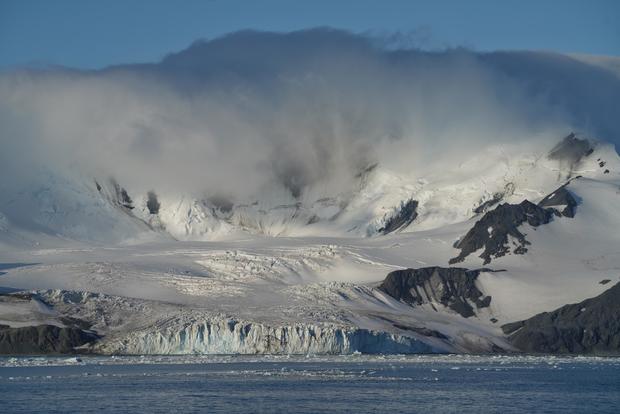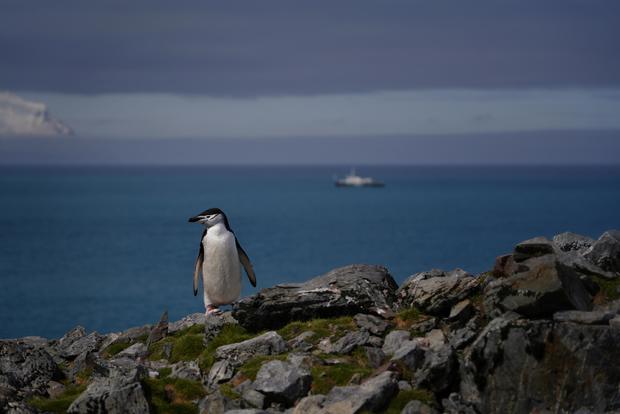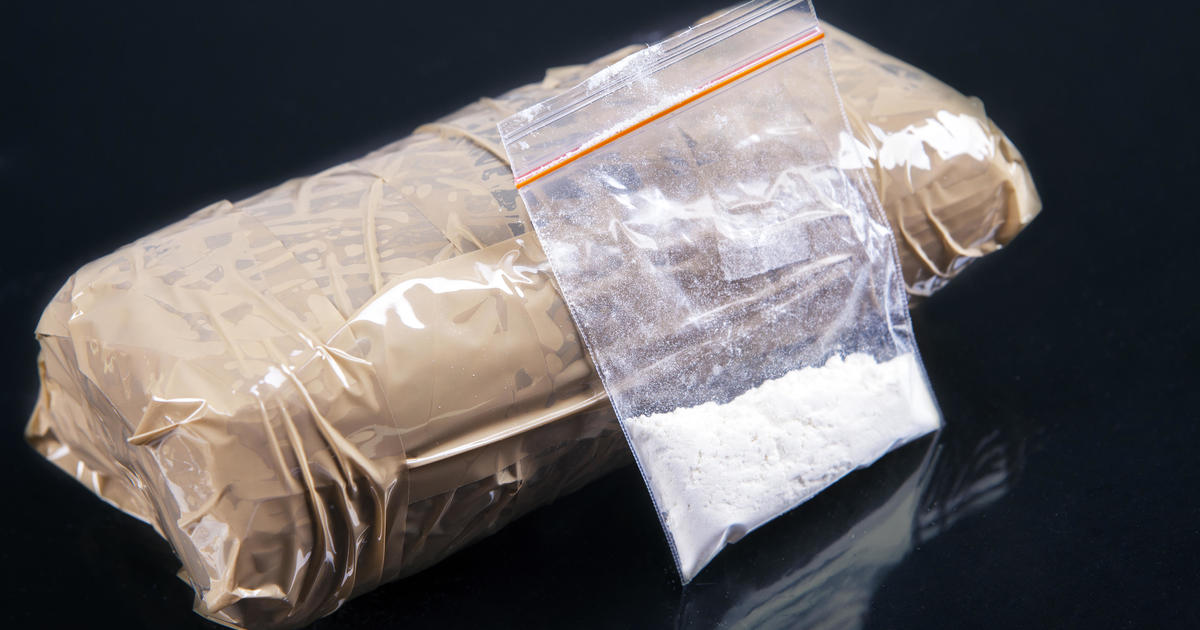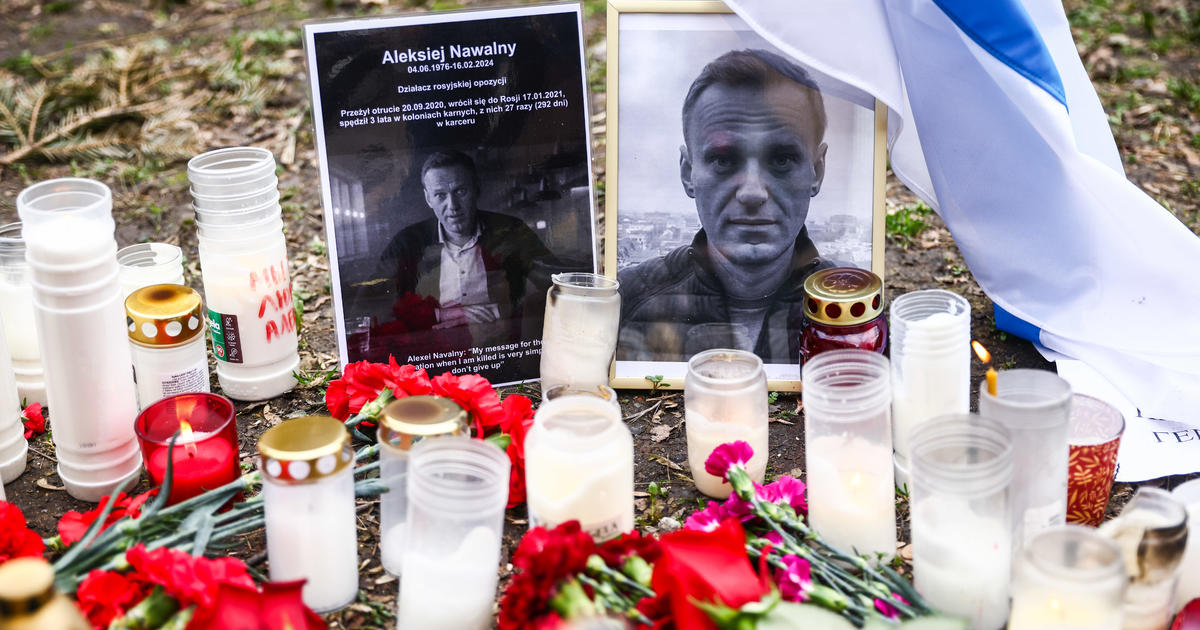Lessons from the penguins in one of the fastest-warming places on Earth
Antarctic Peninsula — Even by Antarctic standards, Elephant Island is hard to reach, which is why few people have ever set foot there. We traveled three days by ship from Argentina, crashed through waves and climbed from one rubber raft to another to finally land on its rocky shores.
We'd read a bit about Elephant Island in Endurance, the book about the legendary British explorer Ernest Shackleton. After his ship, Endurance, was crushed by ice in 1915, he and his crew dragged their sleds across floating ice to the "savage coast" of Elephant Island — "truly an inhospitable place" with winds reaching 120 mph. Here, fingers could quickly turn white from frostbite. To warm up their hands, the men would thrust them into the "blood-warm bowels" of freshly killed seals and penguins. The explorers made meals of both to survive. One day, they "secured" (i.e. clubbed) 77 penguins from a huddle, or group, of 200.
Shackleton and his men reached the island in April, during the Antarctic winter. We arrived in summer — when the temperature seemed balmy, hovering around 30 degrees Fahrenheit, (roughly 15 degrees warmer than my hometown of Fargo, North Dakota, though a bit windier).
Several penguins and fur seals greeted us on shore. My team and I dropped our bags and started taking photos. As our cameraman Davicito Cohen would later remark, it was a photographer's paradise. Everything we saw was awe-inspiring: The sweeping cliffs, a penguin colony perched on a plateau above us and a few penguins waddling and clucking across the pebbled beach.
The seals eyed us suspiciously. Recalling advice our guide Tom Foreman had given earlier, to beware of their bacteria-laden bites, we kept a safe distance.
Camp life
Tom and Timmy Burgler, another guide who specializes in polar expeditions, had already set up our camp. They gave us a short orientation. We would be sharing small red tents, while a larger tent served as the kitchen/dining room and also housed a battery-powered charger for our phones and computers. No Wi-Fi, no surprise.
Another tent, a bit farther off, was set aside for #2. Yep, that number 2. For #1, we were told to find a big rock.
No throwing trash anywhere. If we spotted plastic, (Tim had already collected some large fishing buoys and trash), we should gather it to help keep the island pristine.
Dinner at Chez Elephant was surprisingly good — for freeze-dried food that came in small bags. I chose the couscous-and-spinach flavored one. To prepare, you add boiling water, stir, let it sit for five minutes, add a bit of vegan protein (optional), then enjoy. After consuming our 500-calorie meals, we munched on nuts and dry fruit for dessert.
That night, I found my tent to be amazingly wind- and waterproof… but not soundproof. The penguins stood several feet away, but their squawking kept me tossing in my sleeping bag for an hour. So I popped in my earphones and turned on my white noise app. Worked as well as it does in London.
Penguin counting
Early the next morning, we hiked up a steep hill with Alex Borowicz, one of the researchers from Stony Brook and Northeastern Universities on a mission to count the island's chinstrap penguins, named for the black line under their beaks. When we reached the peak, all at once a massive chinstrap colony unfolded before us. Alex walked along the border and began clicking — 1, 2, 3, 4 — while filming with a GoPro camera that David had strapped to his chest.
Alex, who has been counting chinstraps in Antarctica for six years, had told us penguins are easy to monitor because they come back to the same spot every year to nest. Without understanding penguins, he said, "we don't have a great chance of understanding what's going on deep under the surface here and how this whole system might change as the climate changes around it."
Only scientists are allowed to enter the rookeries, so we watched the scene from a distance: One parent penguin babysat while another traveled down a "penguin highway" to fish for krill, then trekked back up to feed its chick the shrimp-like food. Tom told us never to stand in the middle of these highways. He said if we did, the penguins would stop, get confused, and bob their heads back and forth, wondering what to do.
Nesting together, we later learned, helps the penguins protect themselves from predators like skuas, which can swoop in and steal young chicks or eggs. The penguins team up to peck the skuas away.
The white pebbles the penguins built their nests on were spattered with pink blotches — the color of their guano (penguin poo), which is also the color of krill. (I don't remember it being stinky, but producer Randall Joyce is sitting next to me, reminding me that it was.)
When Alex took a break, I asked him what makes a good penguin counter.
"Patience and focus," he replied. He and his team count all of the penguins three times to make sure their calculations are accurate. Their tallies have to agree within 5% of one another. The researchers also survey the penguins from the air, by drone.
Chinstraps and climate change
A few days later we joined the researchers on their Greenpeace ship, Esperanza, as they added up their numbers. So far, they had found a more than 60% drop in the chinstrap population on Elephant Island since the last major survey 50 years ago. That's a decline of around 150,000 penguins — another sign, the researchers say, that across the region this penguin population is collapsing.
That drop is likely related to climate change, according to Dr. Heather Lynch, the lead researcher based at Stony Brook University. But her team is trying to figure out exactly why and how.
The Antarctic Peninsula is one of the fastest warming places on the planet. Average temperatures here have soared by more than 5 degrees Fahrenheit over 50 years — an increase about five times the global average.
Climate change can make what would normally be snow fall as rain. A wet egg won't hatch, Alex told me, and a wet chick has to burn energy to stay warm rather than to grow. They can handle some rain, but not too much.
Melting sea ice could also be a factor. Since the late 1970s, sea ice on the Western Antarctic Peninsula has decreased by up to 25%, according to a study published in 2012. Krill, the chinstraps' primary food, need sea ice to survive.
Another penguin species, the Adélie, is also declining in the region as krill populations drop. Gentoo penguins, however, aren't such picky eaters (in other words they eat more than just krill), and their numbers are on the rise.
The lesson, chief scientist Steve Forrest told us, is that in our rapidly changing environment, we've got to be able to adapt – or like the chinstraps and Adélies, we won't fare well.
He suggested that people look at what's happening to these penguins and ask ourselves: "Can we live on a planet that's going to be changing in a way that might make it difficult for us to survive? So let's do something about it."
"We all have a role in trying to do something about climate change, whether it's our own individual actions or our ability to select leadership that can address the problem," Forrest said.
Greenpeace, along with other environmental organizations and marine experts, is pushing for a United Nations treaty that the organization says could go a long way to help the penguins and other wildlife in the Antarctic. Greepeace hopes such a treaty can lead to the creation of ocean sanctuaries protecting 30% of the world's oceans by 2030.
The next, and possibly final, round of negotiations is to be held in New York in March. Click on this link to learn more about the Greenpeace initiative.
